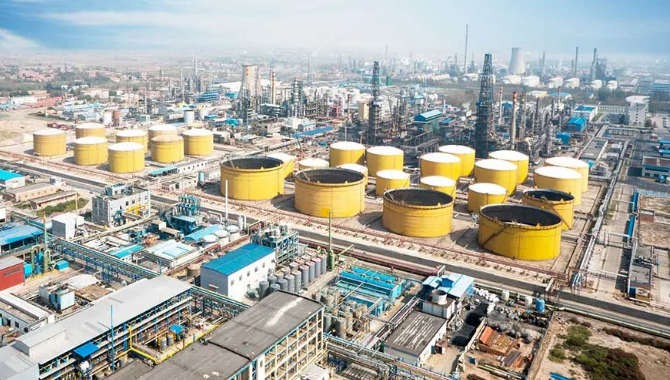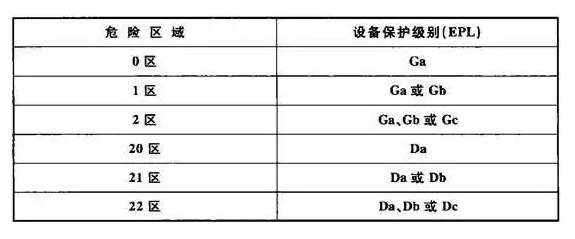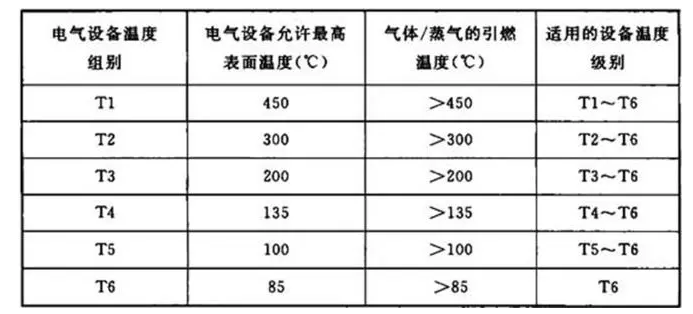
In many enterprises in the chemical, petroleum and other industries, due to the flammable and explosive characteristics of raw materials, intermediate products, and finished products in various links such as production, storage, and transportation, coupled with the complex and variable chemical process flow, high temperature, high humidity, high pressure, and deep cold, there is or may be the overflow of flammable liquids, vapors, and gases under normal or accident conditions.

When these combustible media are mixed with air at a certain concentration, an explosive mixture is formed, and the space occupied by the explosive mixture becomes an explosive hazardous environment of varying degrees. Below, we will briefly describe the classification of hazardous areas for explosive gas environments and the selection requirements for electrical equipment.
1. Confirm the zoning of the explosion-proof area
(1) Different types and durations of release correspond to different levels. Explosive gases correspond to zones 0, 1, and 2, while explosive dust corresponds to zones 20, 21, and 22.
(2) Different levels correspond to different levels of electrical equipment protection (EPL). Taking explosive gases as an example, in general, the explosive gas environment is mainly in Zone 2, with a small amount of Zone 1. Zone 1 is mainly within the range of Zone 2, or there are requirements for some special release sources (such as Zone 1 within 15m of the tank car's closed injection port).
(3) Corresponding to Zone 0 of explosive gas environment, the equipment protection level for electrical equipment is Ga, Zone 1 of explosive gas environment is Ga, Gb, and Zone 2 of explosive gas environment is Ga, Gb, Gc. After comprehensive consideration, the equipment protection level can be selected as Gb, and similarly for explosive dust environment, the equipment protection level can be selected as Db.
The specific selection of protection levels for electrical equipment in explosive environments is shown in Table 1:

2. Select explosion-proof structures for different electrical equipment based on their protection levels
There are several types of general electrical explosion-proof structures:
(1)Explosion proof typeCan withstand sparks generated when combustible substances enter the shell or when specified faults occur, and cannot ignite combustible gases or dust;
(2) Enhanced safety: Measures are taken to prevent the generation of hazardous factors both internally and externally for electrical equipment that does not generate arcs and sparks under normal working conditions;
(3) Positive pressure type: Electrical equipment that maintains the internal air pressure of the equipment higher than the external pressure to achieve safety.
Common electrical equipment, such as distribution boxes, lighting fixtures, and motors, can be of explosion-proof type; Explosion proof junction boxes and threading boxes can be of increased safety type.
3. Determine the level group of explosive gas or dust mixture based on its specific composition
Each explosive gas can be classified based on the maximum test safety gap or minimum ignition current ratio (see Table 2), and grouped according to the ignition temperature (see Table 3). For explosive dust, it is no longer classified into levels and groups, but is classified and labeled with the highest surface temperature of the equipment.
Table 2 Classification of Explosive Gas Mixtures

Table 3 Grouping of ignition temperatures

When there is a mixture of multiple combustible substances, the selection should be based on the level and group of the explosive mixture after mixing. When there is no information available and it cannot be determined through experiments, it can be classified as a higher level and group.
When there are both explosive gases and dust in the explosion-proof area, both requirements should be met simultaneously. When it comes to combustible gases or dust that cannot be determined through experiments and have no available information, other explosive gases or dust with the same chemical structure can be referred to.